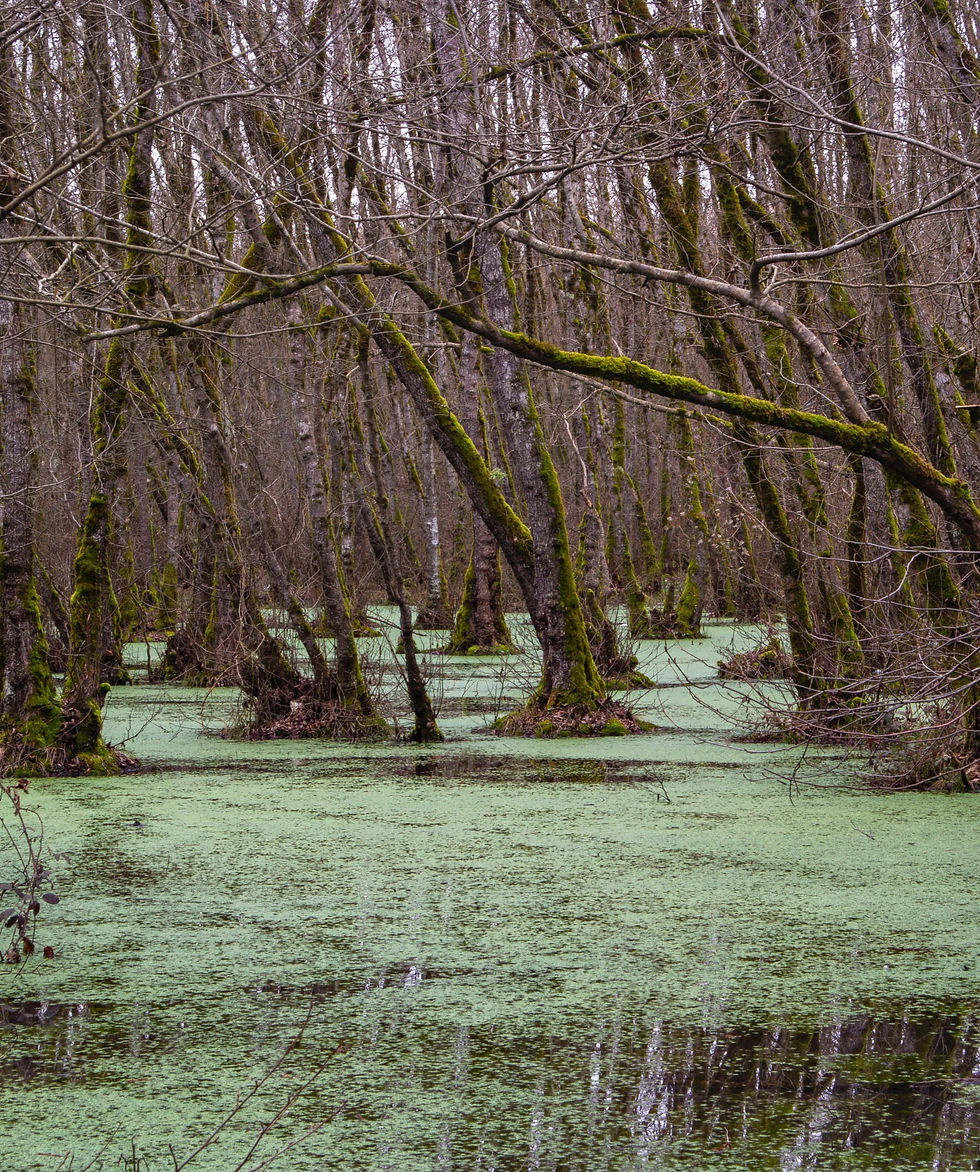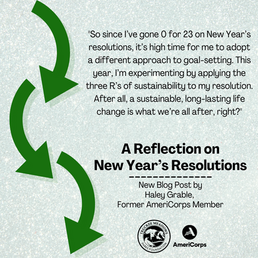Wetland Diversity: The Many Different Kinds of "Wet-Lands"
The term “wetland” is one that can conjure to mind a wide array of landscapes. A Louisiana swamp covered in cyprus trees, a coastal flood plain walled off by sand dunes, or a marsh studded with long grasses and intertwined with slow moving water. All of these habitats are indeed wetlands. However, they vary greatly in function and composition. This begs the question, what is a wetland? According to the EPA, a wetland is an area where the soil is either covered or saturated with water for a significant part or all year. This is a very broad definition, but it does little to point out the differences between the types of wetlands.

There are four main categories of wetlands: marshes, swamps, bogs, and fens. Each of these categories can be broken down into subcategories based on the kind and amount of water as well as soil and vegetation composition. Marshes, for example, are broken down into two subcategories; tidal and non-tidal.

Tidal marshes are supported by tidal fluctuations, daily and seasonally, and can be found globally at mid to high latitude ranges. They are essential in storm surge flooding prevention in hurricane regions, and are vital migratory bird habitat. They are usually made up of emergent cord grass species and sandy, well draining soils. On the other hand, non-tidal wetlands are not confined to the coast. These wetlands are defined as any place fresh water collects outside of rivers, streams, and lakes, although they can be alkaline or slightly brackish as well. They typically occur in natural depressions near large bodies of water that are able to seep through the soils at certain times of the year, or where seasonal flooding occurs due to rain water or snowmelt. This results in a very high amount of good nutrients, and as a result these habitats are one of the most productive ecosystems in the world. Even a small non-tidal marsh can support a disproportionately large number of flora and fauna, which makes them a crucial habitat to protect.
Swamps, which are perhaps the most recognizable wetland habitat, are very similar to marshes. They can be tidally influenced or fed by inland water sources, but they are different from marshes in that swamps are dominated by woody plants. There are two subcategories of swamp, which typically occur next to one another.

Most people are familiar with forested swamps, which as the name implies are dominated by trees. Some examples include red maple swamps in New England, or cypress swamps in the Southeast. On the perimeter of these large forested swamps are shrub swamps. These habitats are populated by species such as dogwoods or mangroves, woody species that do not grow proper trunks. Both ecosystems provide valuable services in the form of flood and storm surge mitigation, as well as excess nutrient uptake. These services combined improve shoreline and water quality downstream by decreasing the overall load of particulates in the water. Like marshes, swamps also support a large number of wildlife species, which makes them all that more important for conservation.
In addition to marshes and swamps, there are also bogs. In general, these wetlands are defined as very acidic and composed of peat soils created by generations of decaying sphagnum moss that receive their water as precipitation.

Bogs are formed either by encroachment from sphagnum moss over a pond, or by water retention from the moss forming mats on bare ground. Due to the acidic and unique soil conditions of bogs, they are usually home to very specific plants and animals. For example, pitcher plants occur almost exclusively in bogs in the northern hemisphere, as their carnivorous diet allows them to compensate for the lack of soil nutrients available in peat. In North America, there are distinct bogs known as pocosins that form in the Southeastern pine forests where the water table is relatively high. In some cases, it is high enough for pockets of sphagnum moss to form and collect rain water, creating a wetland. Similar to bogs and pocosins are fens. Like bogs, they create peat through the build up of sphagnum moss. However, these wetlands are typically fed from groundwater movement as opposed to precipitation. Fens also differ from bogs in that they are less acidic and have a higher nutrient availability, which leads to a higher diversity of plant and animal life. Both wetland types support larger watersheds by reducing flooding by absorbing excess water and providing niche habitat for unique species.
To get an in person experience of a wetland, the Rosewood Nature Study Area is a non-tidal marsh located in Reno. At the Nature Study Area, guests can see up close how plants grow right up to the water’s edge in this ecosystem, creating a range of habitat both in and out of the water. Such species to look out for would be cattails and bulrush, willow trees, and cottonwood trees. Hiding amongst these plants are birds or various species, butterflies, and small mammals like muskrats and raccoons. Following the path of the water, it becomes clear how the twists and turns and stopping points in the marsh slow it down. This allows the water to deposit sediments and nutrients that otherwise would be carried downstream, polluting the Truckee River. As restoration continues, the benefits and functions provided by the Rosewood Nature Study area will only become more evident. Hopefully, wetlands like this marsh and others like it across the world, along with all the swamps and bogs, will continue to exist to provide homes for wildlife, and services that benefit all creatures great and small.

About the Author:

Former Lead Wetland Technician, Sadie Smith, hails from Vermont but has had the pleasure of calling many places home; from the Eastern Townships of Quebec where she went to boarding school to the sunny coast of St. Petersburg, Florida where she graduated from Eckerd College with a B.S. in Biology. Her favorite pastimes include playing rugby, creating artwork, or spending any kind of quality time outside enjoying nature.




















PoE 2 Skills - Ultimate Path of Exile 2 Skill Tree Planner
Sprunki Corruptbox | 🕹Play Free Online Corruptbox Game
Gonggi Game : Korean Jacks Rules, History & How to Play | 공기
Explore the ultimate musical horror experience in Sprunki Phase 5 !
MiSide Mods : Enhance Your MiSide Game Experience | Top Mods
Parasprunki : 🕹 Play Mod on Parasprunki
Incredibox Banana :🕹 Play Banana Mod on IncrediboxBanana
Parodybox Sprunki : 🕹Play Music Creation Game | Mods
Sprunki Pyramixed :🕹 Rhythm-Based Music Creation Game | Play Online
Maze Game - Challenge Your Mind with Exciting Puzzles
Snow Rider 3D: Unblocked Ski Adventure | Sled Rider Game
Love Tester: Online Quiz Game | Find Real Love & Soulmate Match
Penalty Shooters 2 - Ultimate Football Penalty Shootout Game
Sprunksters: 🕹️…
google 优化 seo技术+jingcheng-seo.com+秒收录;
Fortune Tiger Fortune Tiger;
Fortune Tiger Fortune Tiger;
Fortune Tiger Fortune Tiger;
Fortune Tiger Slots Fortune…
站群/ 站群
gamesimes gamesimes;
03topgame 03topgame
EPS Machine EPS Cutting…
EPS Machine EPS and…
EPP Machine EPP Shape…
Fortune Tiger Fortune Tiger;
EPS Machine EPS and…
betwin betwin;
777 777;
slots slots;
Fortune Tiger Fortune Tiger;
무료카지노 무료카지노;
무료카지노 무료카지노;
google 优化 seo技术+jingcheng-seo.com+秒收录;
Fortune Tiger Fortune Tiger;
Fortune Tiger Fortune Tiger;
Fortune Tiger Slots Fortune…
站群/ 站群
gamesimes gamesimes;
03topgame 03topgame
EPS Machine EPS Cutting…
EPS Machine EPS and…
EPP Machine EPP Shape…
Fortune Tiger Fortune Tiger;
EPS Machine EPS and…
betwin betwin;
777 777;
slots slots;
Fortune Tiger Fortune Tiger;
188bet là nhà cái uy tín số 1 trên toàn Châu Á. Được thành lập vào tháng 4/2006 với sự phát triển không ngừng và cung cấp hơn 700 trò chơi cá cược, 188bet đã khẳng định được vị trí của mình với hơn 5,560,000 bet thủ đang tham gia chơi tại nhà cái này.
Sprunki Incredibox is indeed a fan-made mod series inspired by the original Incredibox game. The game allows players to create unique tracks by dragging and dropping sound icons onto characters to generate beats, melodies, and vocals.